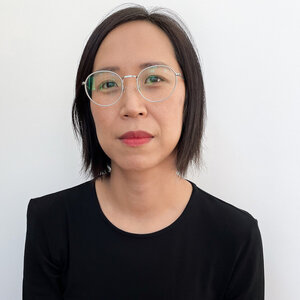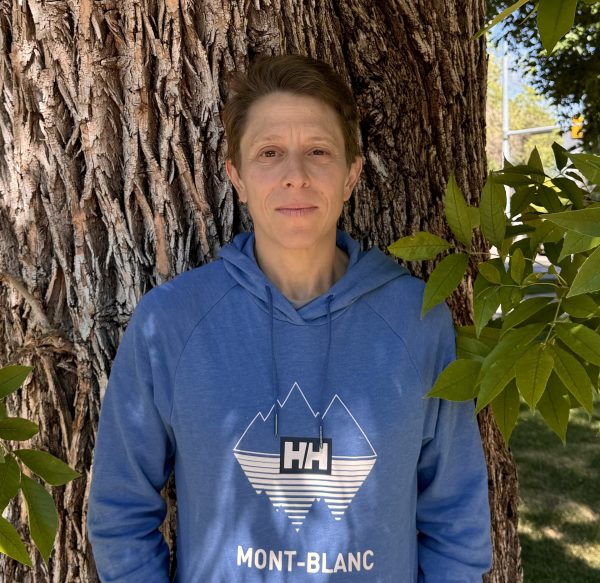Lilly U. Nguyen discusses “Possibilities of a Line,” featured in the Summer 2024 issue of Colorado Review, with associate editor Amy Gordon.
 Lilly U. Nguyen is a writer based in San Diego. Her writing is published or forthcoming in River Teeth, the Southern Review, Tahoma Literary Review, and the North American Review. She has won awards from PEN Emerging Voices, Tin House, and Hedgebrook. She is the American-born daughter of Vietnamese boat people.
Lilly U. Nguyen is a writer based in San Diego. Her writing is published or forthcoming in River Teeth, the Southern Review, Tahoma Literary Review, and the North American Review. She has won awards from PEN Emerging Voices, Tin House, and Hedgebrook. She is the American-born daughter of Vietnamese boat people.
Amy Gordon: I’ll start by asking about your essay, “The Possibilities of a Line.” We see many different themes—you have pain, UNC, racism, confederate monuments, your father and his family and that unknown history, moving to a new place, your daughter, and, of course, the art.
I’m always curious about process. When you sat down to write, did you have all these ideas in your head, or did you have one idea you were going to write about and then the rest sort of found their way in?
Lilly U. Nguyen: My process is usually that I start with an intensely emotional moment–oftentimes, those are ones that are almost inexplicable, as if there’s no rational through line as to why they would be so emotional. I’m writing something very vivid and alive, something I lived that happened to me. I find that the threads really speak to the sense that life is naturally very complicated. So we have categories of themes—somehow motherhood is its own theme, and then war is its own theme, and racial violence is own theme, but more often than not, all of those things come together, and they come together at the moment of ourselves.
So for me, it was like the condensation of that moment. And then bringing in the art is me, at the desk, trying to make sense of all of it. And I found that Ruth Asawa’s experience in her artistry really illuminated the themes. Once I started researching more about her, it just felt so intensely related. It helped to highlight and personify the sensation of awareness as I’m writing, what I thought the piece would be about.
AG: That really resonates so much with my reading of the piece, because I could see how everything was connected through the narrator. Like you said, it’s not these distinct or discreet parts, but something that all comes together, and then the line felt like a way of making sense of it. Were you researching Asawa as you were writing, or was that something you had done ahead of time?
LN: It was afterwards, actually. I had written one draft of it, and I had stalled out. At one point this piece was really, really long and it was just overwrought and just not right. This is probably the second time I’ve written with art. I like writing with artists because you get to borrow their moods and appropriate or smuggle their aesthetic a little bit into your own pieces. I found her wire sculptures helpful in thinking about body and history and violence, and the story of her life and her biography along with her artwork helped me hone in and amplify the significance of the events that I was writing into. It does it feel like the essay is in deep conversation with her, but also with these larger themes. I wouldn’t say that I’m very well-versed in art in general, but I find that writing with art is helpful to consolidate a sense of purpose and what is coming up as I’m writing about a particular time in my life.
AG: Were you still in North Carolina while you were writing the essay?
LN: Not at all. I don’t think I can write that closely. I take a lot of time to process. I think the intensity of those experiences makes it very, very difficult to be able to write about them. When I was living them, obviously I was aware of what was happening, but I didn’t know if I could fully emotionally hold myself while writing about it. I find that I have to recover quite a bit before I can ever write about something very intense. It’s just too much; you’re living through it twice.
AG: I saw that you studied feminist science and technology studies and then you taught in that field. I’m curious when you started doing more creative nonfiction writing and how and why you started?
LN: After my time at North Carolina, I ended up quitting that job only because the racial climate was truly unbearable for me and my family. It no longer felt like a place that was tenable for us in terms of safety and comfort, so I ended up leaving that job and leaving that profession. I didn’t mean to leave the profession, but it just kind of happened that way, and this was when the pandemic happened. It was very emotional, and I just began writing creatively. I already had a writing habit, in a sense that I was used to waking up and spending three hours at my desk and trying to make something happen on a page. I’d already been doing that for a very long time. And I enjoy that very much. But what I felt compelled to write began in privacy. For a long time, I was writing about profound, really intense memories I couldn’t shake. And then because we were all kind of alone and in our homes, it began growing and taking on a life of its own.
And yeah, academic writing and creative writing are very, very, very different. They’re just wildly different, right? Nevertheless, I think that I still bring a lot of the questions that motivated me from an academic point of view. They are more on the surface now. I think I wasn’t able to really admit to myself that I probably always wanted to be a creative writer.
AG: I also used to do a lot more academic writing, and I felt like I to unlearn a lot of what I did then.
LN: Yeah, that’s such a good way to describe it. You have to unlearn how to relate to a question. You have to unlearn how to relate to a sensation of a thought. You have to unlearn how you question yourself. A lot of your intuitions about what’s worthy of pursuing gets recrafted in a lot of ways. Academic writing is often about hiding the self and the narrator as if thoughts manifest from nowhere, and creative writing is for the self to appear as if it always should have been. Creative writing was initially really difficult to do, but it became really easy. There’s a very deep kind of transformation of the self that has to happen when you have to learn to just sit with yourself with much less judgment. I do think I’m a really good editor, because I still have those academic muscles. And with research, I feel really confident that if I don’t know something, I can figure it out and look it up.
AG: It sounds like, and I don’t want to put words in your mouth, that you’re saying you realized a lot of the questions under the surface of your academic life were able to find breath in creative nonfiction. That’s such a fascinating way of thinking about it, because in academic writing, like you said, you have to tamper that, you have to hide that part of it, in a way.
LN: You do. I mean, the format of writing, the forms stylistically, the use of the subject pronoun “I,” was a very huge thing. And even in the field that I was writing in, even if this was encouraged to some degree, it was like walking on a tightrope, a very, very thin, very high tightrope. And how to do it correctly was always difficult. And even if now the trends in the field encourage that more, the idea that you’re having to produce objectivity is hard to stand up to.
AG: Does objectivity exist?
LN: I think all of us are trying to get to truth. Specifically in the field of feminine science studies, there is a long history of thinking about the question of objectivity and how objectivity is in fact constituted and how it’s culturally informed. There’s a lot of discussion around the gendered creation of scientific knowledge and the processes of knowledge-making.
I think a lot about truth because it’s a theme in my life. When you grow up as an immigrant kid, you have your parents telling you stuff, and you question their judgment and try to discern what’s true and not. This is still something I think a lot about.
AG: Do you find that creative nonfiction puts less pressure on you to find that truth?
LN: I certainly feel like truth is complicated, and truth is always multiple. Even if it’s my truth, stylistically, I’ve really made a point to write my experiences alongside my parents—I think that’s a feature of a lot of my writing as a way to correct the record that we’re all individuals. Vietnamese people, at least in my generation, growing up, talked about how people in the U.S. live as individuals. It’s a lot lonelier here in America, for better or for worse. Writing in this way also shows that truth is also woven across many different layers.
I love good creative nonfiction where you’re discerning between the person on the page and the person at the desk, and we’re trying to figure things out together. Truth is the result of both of these. And that, I love, which is why I can never write in the moment.
It’s interesting to think about how truths surface at certain moments over others. And the way we evolve over time or come into new or deeper understanding, or evolved understanding, of our lives.
AG: Writing is such a powerful way of doing that. When you’re trying to put something on a page, and sort of forced to put it into words, you have to think about everything in different ways.
LN: I love the expression of telling it slant. I think that’s how we come into most truths. It’s not like a movie. They really distort how we live our lives, that we’re all-knowing in the moment. I love the messiness. I feel a lot of emotional energy around that, and staying true to that messiness is part of the fun of writing. I love connecting with people, and oftentimes we connect most through a shared sense of messiness. I feel excited when I see that on the page too.
AG: One final question. Are you working on anything particular now?
LN: I’m working on another piece. I don’t know how to talk about it right now, but it’s about going on walks with my mom, in a way that walks are more than just walks.
AG: I hope I get to read it someday. Thank you so much.

Amy is a third-year MFA candidate at Colorado State and moved to Fort Collins from Flagstaff, AZ where she practiced sports medicine acupuncture. In previous lives, she was a lawyer in the Army JAG Corps, a Peace Corps volunteer in Samoa, and an English teacher in Costa Rica. She grew up in New York and has lived all over the U.S. and in a few other countries.